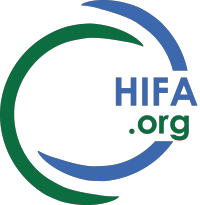Citation, abstract and comment from me below.
CITATION: J Glob Health. 2025 Apr 2:15:04085. doi: 10.7189/jogh.15.04085.
Health service readiness and quality for sick child care: an effective coverage analysis in eight low- and middle-income countries
Maïga A et al. https://pubmed.ncbi.nlm.nih.gov/40168517/
ABSTRACT
Background: Most child deaths can be averted through prompt and appropriate treatment of child illnesses such as pneumonia, diarrhoea, and malaria. However, research has suggested that increases in care seeking do not necessarily mean that quality care is being received. We assessed the service readiness and process quality of curative healthcare during childhood and determined whether children are receiving health services with sufficient quality across countries.
Methods: We linked data from household surveys including the standard Demographic and Health Survey and the Multiple Indicator Cluster Survey to data from facility surveys including the Service Provision Assessment and Health Facility Assessment in Bangladesh, the Democratic Republic of Congo, Haiti, Kenya, Malawi, Nepal, Senegal and Tanzania to estimate the effective coverage of child illness treatment. We assessed the gaps in service availability and coverage, lack of service readiness, missed care opportunities, and inadequate service process, where service readiness and process quality were defined according to global standards with country-specific adaptations. We analysed the service readiness, quality of care, and effective coverage by individual illness and combined illnesses accounting for equity dimensions.
Results: Seven to 42% of children experienced at least one illness. An integrated management of child illnesses (IMCI) service was available in 58-85% of facilities. We found that 55-66% of health facilities in the countries were ready to deliver treatment to sick children. However, the readiness-adjusted contact suggested that child healthcare was mostly sought in facilities with low readiness score, ranging from 15% (Nepal) to 46.0% (Malawi). Health facilities had low diagnostics, supervision, and trained personnel capacity to manage child illnesses. Concerning the quality of care, only 51-60% of the procedures during clinical encounters were in line with standards. Counselling of caretakers had the lowest score, while treatment components had the highest process quality score. Hospitals had higher readiness and process quality scores compared to primary facilities and the private sector. There were, however, large gaps in service readiness and significant inadequate service processes in all countries; 35% (Haiti) to 79% (Bangladesh) of sick children sought care from a health facility, with only 7% (Nepal) to 29% (Malawi) of them actually receiving appropriate treatment. We found large inequalities in care seeking, quality of care, and effective coverage across levels of education and poverty, and places of residence.
Conclusions: A large proportion of facilities did not meet the required capacity to provide IMCI services. The provision of health services has major quality gaps, highlighting the need for strengthening health service access, capacity and quality of care to reach universal child health coverage.
COMMENT (NPW): This paper implies that 34-45% of hospitals are not ready to deliver treatment to sick children. Furthermore, only 7-29% of sick children received appropriate treatment.
The authors conclude that 'strengthening the healthcare system through the health workforce, and service capacity, quality and access appear as a prerequisite and priority to achieving the goal of universal child health coverage in LMICs'. What is missing from the paper is a quantitative assessment of the role of (lack of) access to relevant, reliable healthcare information versus organisation/management practices versus available resources (medicines, diagnostic equipment).
We simply do not know the quantitative contribution of (lack of) access to relevant, reliable healthcare information as compared with other factors. This reminds us of the work of Kruk et al, which estimated that 5 million people die each year in LMICs due to poor quality care, but was unable to assess relative contributions.
If I were a patient, I would rather be cared for by a health professional who knows what they are doing, even if (especially if) there are few available resources, rather than by someone with major deficits in healthcare knowledge, even if they are well resourced. What would be your choice?
Best wishes, Neil
HIFA profile: Neil Pakenham-Walsh is coordinator of HIFA (Healthcare Information For All), a global health community that brings all stakeholders together around the shared goal of universal access to reliable healthcare information. HIFA has 20,000 members in 180 countries, interacting in four languages and representing all parts of the global evidence ecosystem. HIFA is administered by Global Healthcare Information Network, a UK-based nonprofit in official relations with the World Health Organization. Email: neil@hifa.org

